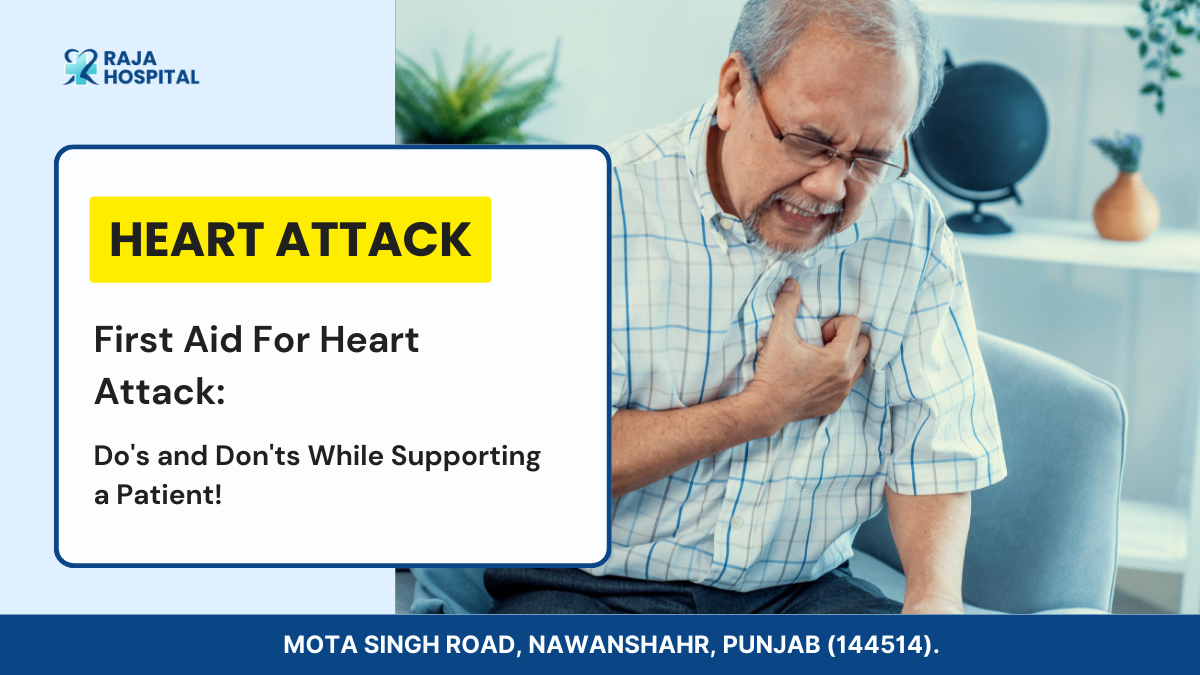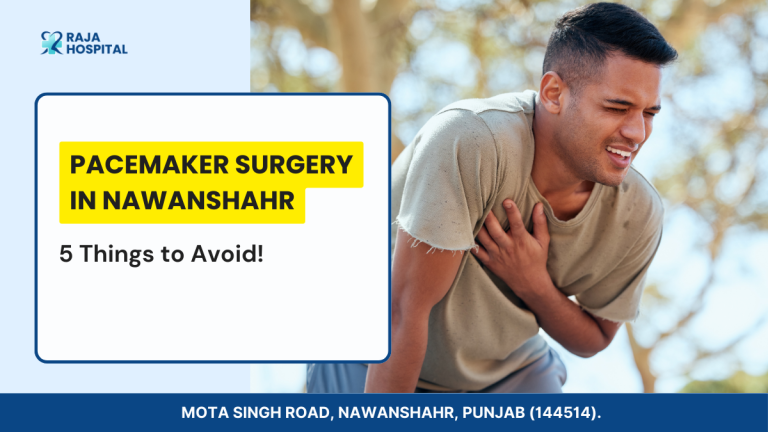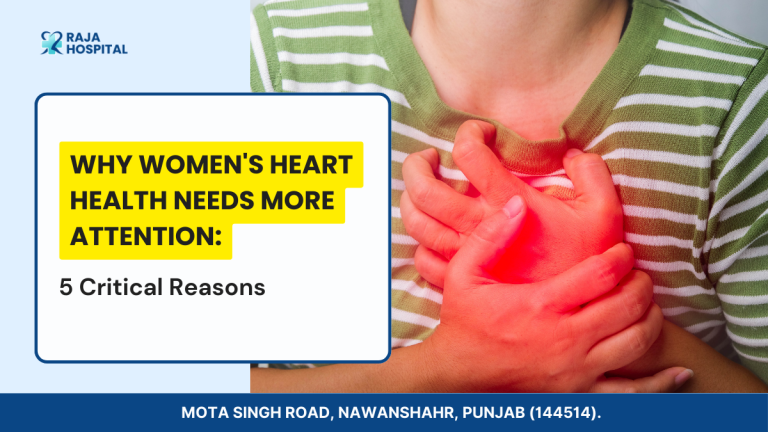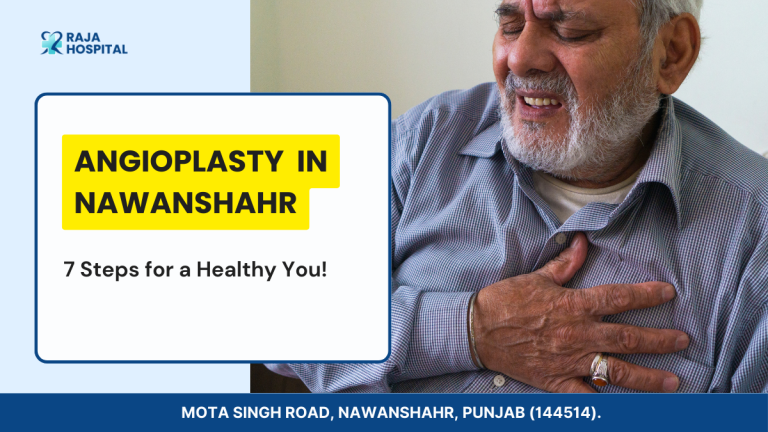First Aid for Heart Attack: Do’s and Don’ts While Supporting a Patient!
Reviewed By Dr. Raghav Vishesh Lumb (MD Medicine, DM Cardiology ) 1st August 2023.
Knowing how to provide immediate/ and appropriate first aid during a heart attack can save lives and minimize potential complications.
This blog post aims to equip readers with essential knowledge and guidelines on what to do and what not to do while supporting a patient experiencing a heart attack.
Understanding these do’s and don’ts can empower individuals to take quick and effective action in emergencies, ensuring the best possible outcome for the affected person.
What is a Heart Attack?
A heart attack, also known as a myocardial infarction, occurs when a coronary artery that supplies blood to the heart becomes blocked by a blood clot or a buildup of fatty deposits called plaque. This interruption in blood flow deprives the heart muscle of oxygen and nutrients, damaging the heart tissue.
Recognizing the Signs of a Heart Attack
Before administering first aid, it’s crucial to recognize the signs of a heart attack. The common symptoms include:
- Chest pain or discomfort is often described as pressure, squeezing, fullness, or pain in the center or left side of the chest.
- Pain or discomfort that radiates to the left arm, back, jaw, neck, or even the right arm.
- Shortness of breath, especially during physical activity or at rest.
- Nausea, vomiting, or a feeling of indigestion.
- Cold sweats and a sense of anxiety or impending doom.
Do’s and Don’ts During a Heart Attack
When supporting a person experiencing a heart attack, following the correct actions can significantly improve their chances of survival and recovery. However, avoiding specific activities that could worsen the situation is equally essential. Here are the do’s and don’ts:
Do’s of Heart Attack:

Call Emergency Services Immediately
Call emergency services immediately when you suspect someone is having a heart attack. Quick medical attention is critical during a heart attack.
Keep the Person Calm
Encourage the person to sit down or lie still in a comfortable position. Reassure them and try to keep them as calm as possible.
Administer Aspirin (If Available and Advised)
Chewable aspirin (ideally 325 mg) can help reduce blood clot formation if the person is conscious and not allergic to aspirin. However, it’s essential to consult medical professionals before administering any medication.
Loosen Tight Clothing
Loosen tight clothing, such as collars or belts, to help the person breathe more comfortably.
Perform Cardiopulmonary Resuscitation (CPR) if Necessary
If the person becomes unconscious and stops breathing, and you are trained in CPR, begin chest compressions and rescue breaths until medical help arrives.
Don’ts of Heart Attack:

Don’t Ignore the Symptoms
Never ignore or dismiss the signs of a heart attack. Prompt action is crucial for a positive outcome.
Don’t Delay in Seeking Medical Help
Time is of the essence during a heart attack. Avoid waiting or hoping the symptoms will subside on their own.
Don’t Let the Person Drive
If the person is experiencing symptoms, don’t allow them to drive themselves to the hospital. Call for an ambulance immediately.
Don’t Give Food or Drink
Avoid giving the person anything to eat or drink, as it may interfere with medical treatments later.
Don’t Perform Unnecessary Movements
Minimize unnecessary movement or physical exertion for the person experiencing a heart attack.
Basic First Aid Training
Having some basic first-aid training can be highly beneficial in emergencies. Consider taking a first aid course to learn proper techniques for assisting with medical emergencies, including heart attacks.
After the Heart Attack

After the immediate crisis has passed, it’s essential to continue offering support and following these steps:
Stay Calm and Reassuring
The person may feel anxious or frightened after a heart attack. Stay calm, reassure them, and offer comforting words.
Keep the Person Warm
Provide a blanket or cover to keep the person warm and comfortable.
Causes of Heart Attacks

The primary cause of a heart attack is the narrowing or blockage of coronary arteries, which supply oxygen-rich blood to the heart. The most common underlying cause is the buildup of cholesterol, fatty deposits, and other substances in the arterial walls, known as atherosclerosis. Factors that contribute to this process include:
- High Blood Pressure: Uncontrolled hypertension can damage the artery walls, making them more susceptible to plaque buildup.
- High Cholesterol: Elevated LDL cholesterol levels (“bad cholesterol”) contribute to forming plaques in the arteries.
- Smoking: Tobacco use damages the blood vessels and accelerates atherosclerosis.
- Obesity and Inactivity: Leading a sedentary lifestyle and being overweight or obese increase the risk of heart attacks.
- Diabetes: People with diabetes have a higher risk of developing cardiovascular complications.
- Family History: A family history of heart disease can also increase the risk.
Precautions to Prevent Heart Attacks

Preventing heart attacks involves adopting a heart-healthy lifestyle and managing risk factors:
- Quit Smoking: If you smoke, seek assistance, as it significantly reduces the risk of heart attacks.
- Adopt a Balanced Diet: Consume a diet rich in fruits, vegetables, whole grains, lean proteins, and healthy fats. Limit the intake of saturated and trans fats, sodium, and added sugars.
- Exercise Regularly: Engage in moderate-intensity aerobic activities, such as brisk walking, for at least 150 minutes weekly.
- Maintain a Healthy Weight: Aim to achieve and maintain a healthy weight through a balanced diet and regular exercise.
- Manage Stress: Practice stress-reducing techniques like meditation, yoga, or deep breathing exercises.
- Control Blood Pressure and Cholesterol: Regularly monitor and manage blood pressure and cholesterol levels through lifestyle changes and, if necessary, medications prescribed by a healthcare professional.
Conclusion
Immediate action, such as calling emergency services, staying calm, and avoiding unnecessary movements, can significantly impact the outcome of a heart attack.
Equipping oneself with basic first aid knowledge and promptly seeking professional medical help are vital steps in becoming a responsible and effective responder during a medical emergency.
Remember, every second counts during a heart attack; your quick and informed actions can make a life-saving difference.




